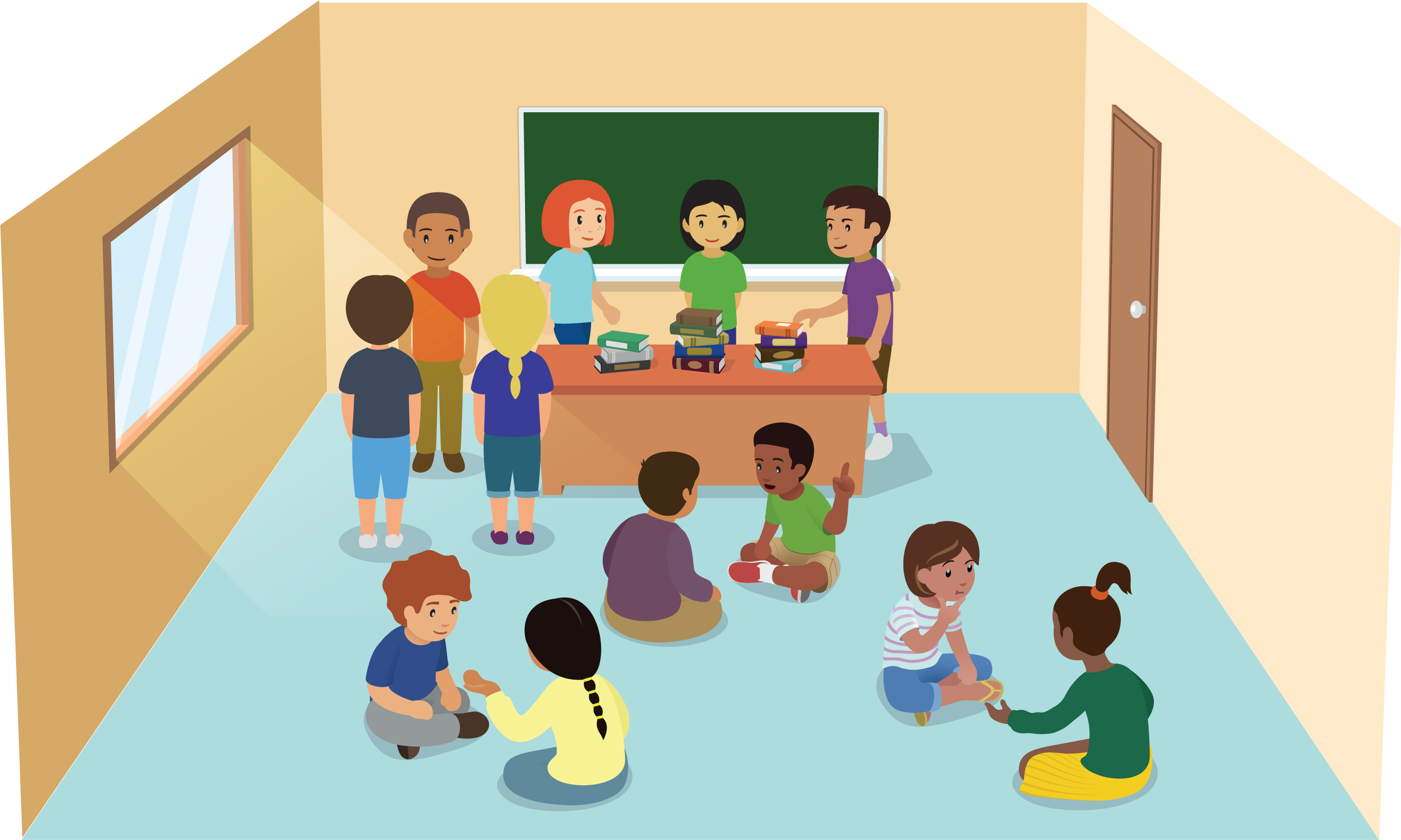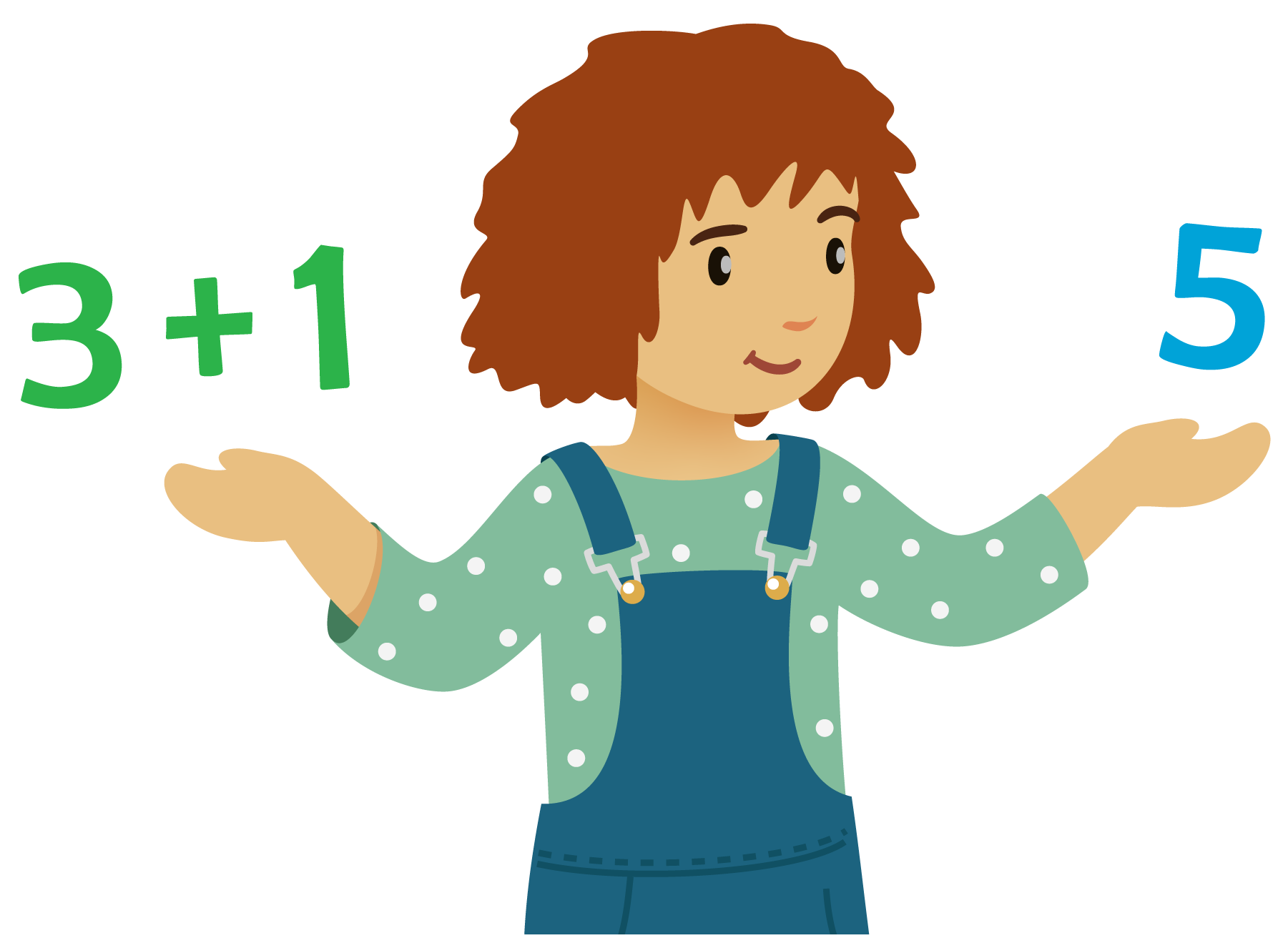Lesson 13
More Story Problems with Teen Numbers
Warm-up: Number Talk: Add Ones (10 minutes)
Narrative
The purpose of this Number Talk is to elicit strategies and understandings students have for adding to teen numbers. These understandings help students develop fluency and will be helpful later in this lesson when students will need to be able to find the missing value in an equation with a teen number.
When students add ones to ones, they are making use of the structure of the base-ten number system (MP7).
Launch
- Display one expression.
- “Give me a signal when you have an answer and can explain how you got it.”
- 1 minute: quiet think time
Activity
- Record answers and strategy.
- Keep expressions and work displayed.
- Repeat with each expression.
Student Facing
Find the value of each expression mentally.
- \(3 + 4\)
- \(4 + 3\)
- \(10 + 3\)
- \(14 + 3\)
Student Response
For access, consult one of our IM Certified Partners.
Activity Synthesis
- “How does knowing \(4 + 3\) help you with \(14 + 3\)?” (You can add \(4 + 3\) and then add 10 more.)
Activity 1: Sitting or Standing (15 minutes)
Narrative
The purpose of this activity is for students to solve a Take From, Change Unknown story problem using a method that makes sense to them. This is a challenging problem type for students because the amount that students are taking away or counting on is the unknown. The activity begins with a numberless and questionless story problem to help students understand the context and structure of the story problem. Students begin the activity by looking at the problem displayed, rather than in their books. The numbers 5, 10, and 15 are used so that the focus of the activity can be on making sense of the story problem, rather than the computation. Students may benefit from acting out the story.
Required Materials
Materials to Gather
Launch
- Groups of 2
- Give students access to double 10-frames and connecting cubes or two-color counters.
- Display and read the numberless and questionless story problem.
- “What do you notice? What do you wonder?”
- 30 seconds: quiet think time
- 1 minute: partner discussion
- Record responses.
- If needed, “What question could we ask?”
Activity
- “Turn the page and look at the next problem.”
- Read the complete story problem.
- 3 minutes: independent work time
- 2 minutes: partner discussion
- Monitor for students who:
- Show 15 on the 10-frames and make 5 a different color to represent the students who are still standing. The student counts the remaining counters, or just see that there are 10. (\(15 - 5 = \boxed{10}\))
- Draw 15 objects and cross out until there are 5 left. Count how many are crossed out. \(15 - \boxed{10} = 5\)
- Take away 5 from 15 (14, 13, 12, 11, 10) (\(15 - 5 = \boxed{10}\)).
Student Facing

- There are students standing in the classroom.
Some of the students sit down on the rug.
There are still some students standing. -
There are 15 students standing in the classroom.
Some of the students sit down on the rug.
There are still 5 students standing.
How many students sat down on the rug?
Show your thinking using drawings, numbers, or words.Equation: ________________________________
Student Response
For access, consult one of our IM Certified Partners.
Activity Synthesis
- Invite previously identified students to share.
- “How does this method show the story problem?” (I can see 15 for the number they started with. 10 is how many students sat down on the rug. 5 is how many students are still standing.)
- “Remember to put a box around your answer when you solve and write an equation.”
Activity 2: Solve Story Problems and Compare Methods (10 minutes)
Narrative
Advances: Conversing, Speaking
Supports accessibility for: Organization, Conceptual Processing
Required Materials
Materials to Gather
Launch
- Groups of 2
- Give students access to double 10-frames and connecting cubes or two-color counters.
Activity
- Read the task statement.
- 4 minutes: independent work time
- “Share your thinking with your partner.”
- 2 minutes: partner discussion
Student Facing
- There are 17 students in the classroom.
4 students go home.
How many students are still in the classroom?
Show your thinking using drawings, numbers, or words. Equation: _____________________________ - There are 17 students in the classroom.
Some students go home.
Then there are 4 students in the classroom.
How many students went home?
Show your thinking using drawings, numbers, or words. Equation: _____________________________
Student Response
For access, consult one of our IM Certified Partners.
Activity Synthesis
- “How are the two story problems the same and different?” (They have the same numbers. In one of them we know how many to take away and in the other one we have to figure out how many to take away.)
Activity 3: Centers: Choice Time (15 minutes)
Narrative
The purpose of this activity is for students to choose from activities that offer practice adding and subtracting within 10. Students choose from any stage of previously introduced centers.
- Shake and Spill
- Compare
- Number Puzzles
Required Materials
Materials to Gather
Required Preparation
- Gather materials from previous centers:
- Shake and Spill, Stages 3-5
- Compare, Stage 1
- Number Puzzles, Stage 1
Launch
- Groups of 2
- “Now you are going to choose from centers we have already learned.”
- Display the center choices in the student book.
- “Think about what you would like to do.”
- 30 seconds: quiet think time
Activity
- Invite students to work at the center of their choice.
- 10 minutes: center work time
Student Facing
Choose a center.
Shake and Spill

Compare

Number Puzzles

Activity Synthesis
- Display twelve red counters and cover five yellow counters with a cup.
- “We are playing with seventeen counters. How many yellow counters are under the cup? How do you know?”
Lesson Synthesis
Lesson Synthesis
“Today we compared two different types of story problems.”
Display stories and equations from the activity about students leaving the classroom.
\(17 - 4 = \boxed{\phantom{3}}\)
\(17 - \boxed{\phantom{3}} = 4\)
“What question was the first equation answering?” (How many students are still in the classroom?)
“What question was the second equation answering?” (How many students went home?)
“Why is the box in different places?” (They are answering different questions. The unknown part of the story is different.)
Cool-down: Unit 3, Section B Checkpoint (0 minutes)
Cool-Down
For access, consult one of our IM Certified Partners.
Student Section Summary
Student Facing
We learned that 10 ones make a ten.

We learned that all teen numbers can be represented as a ten and some ones.

We used that understanding to find missing numbers in addition and subtraction equations with teen numbers.
\(10 + \boxed{\phantom{6}} = 16\)
\(10 + 2 = \boxed{\phantom{6}}\)
\(5 + \boxed{\phantom{6}} = 15\)
\(13 - 10 = \boxed{\phantom{6}}\)
\(19 - 9 = \boxed{\phantom{6}}\)
We solved a new type of story problem where we don't know how many to subtract. We used different equations to match the story.
There are 17 students in the classroom.
Some students go home.
Then there are 4 students in the classroom.
How many students went home?
\(17 - \boxed{\phantom{3}} = 4\)
\(17 - 4 = \boxed{\phantom{6}}\)